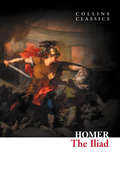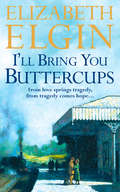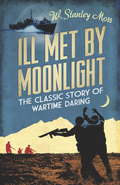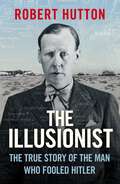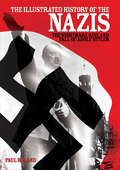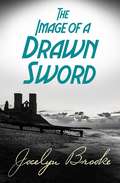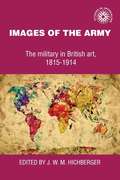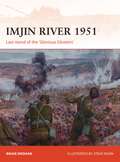- Table View
- List View
Ignorance: Literature and agnoiology
by Andrew BennettAndrew Bennett argues in this fascinating book that ignorance is part of the narrative and poetic force of literature and is an important aspect of its thematic focus: ignorance is what literary texts are about. He sees that the dominant conception of literature since the Romantic period involves an often unacknowledged engagement with the experience of not knowing. From Wordsworth and Keats to George Eliot and Charles Dickens, from Henry James to Joseph Conrad, from Elizabeth Bowen to Philip Roth and Seamus Heaney, writers have been fascinated and compelled by the question of ignorance, including their own. Bennett argues that there is a politics and ethics as well as a poetics of ignorance: literature’s agnoiology, its acknowledgement of the limits of what we know both of ourselves and of others, engages with the possibility of democracy and the ethical, and allows us to begin to conceive of what it might mean to be human. This exciting approach to literary theory will be of interest to lecturers and students of literary theory and criticism.
The Ignorance of Blood (Javier Falcón Bks.)
by Robert WilsonThe final psychological thriller featuring Javier Falcon, the tortured detective from ‘The Hidden Assassins’ and ‘The Blind Man of Seville.’
Il-2 Shturmovik Guards Units of World War 2 (Combat Aircraft #71)
by Oleg RastreninOver 43,000 Il-2/10s were built between 1941 and 1955, more than any other combat aircraft in history, making this one of the most important Soviet aircraft deployed in World War II. Built originally as a two-seater, the Il-2 had lost the rear gunner's position by the time it started to reach frontline units. Armed with ground-attack rockets, the aircraft proved deadly against Wehrmacht panzers as pairs of Il-2s roamed the frontline at low level. However, the Shturmoviks (armoured attackers) were vulnerable to attack from the rear by enemy fighters, so Ilyushin reverted to the two-seat layout in September 1942. Oleg Rastrenin provides a fascinating account of the complex development history of a plane that was crucial to Russia's defence. From Stalingrad to Kursk to Berlin, this book charts the aeroplane's vital contribution to the most famous battles of the Eastern front.
Il-2 Shturmovik Guards Units of World War 2 (Combat Aircraft)
by Andrey Yurgenson Oleg RastreninOver 43,000 Il-2/10s were built between 1941 and 1955, more than any other combat aircraft in history, making this one of the most important Soviet aircraft deployed in World War II. Built originally as a two-seater, the Il-2 had lost the rear gunner's position by the time it started to reach frontline units. Armed with ground-attack rockets, the aircraft proved deadly against Wehrmacht panzers as pairs of Il-2s roamed the frontline at low level. However, the Shturmoviks (armoured attackers) were vulnerable to attack from the rear by enemy fighters, so Ilyushin reverted to the two-seat layout in September 1942. Oleg Rastrenin provides a fascinating account of the complex development history of a plane that was crucial to Russia's defence. From Stalingrad to Kursk to Berlin, this book charts the aeroplane's vital contribution to the most famous battles of the Eastern front.
The Iliad: Edited With Apparatus Criticus, Prolegomena, Notes And Appendices: Vol I. , Books I-xii (Collins Classics)
by HomerHarperCollins is proud to present its new range of best-loved, essential classics.
I'll Be Seeing You (Mira Ser.)
by Suzanne & Hayes & Nyhan‘I hope this letter gets to you quickly. We are always waiting, aren’t we? Perhaps the greatest gift this war has given us is the anticipation…’
I'll Be Your Sweetheart: A heart-warming saga of mothers, daughters and best friends (Molly and Nellie series, Book 8) (A\molly And Nellie Novel Ser.)
by Joan JonkerWhile Molly and Nellie play detective, for Molly's youngest, there's also a party to plan and a boy to impress... Joan Jonker brings us another instalment of her hugely popular Molly and Nellie series in I'll Be Your Sweetheart, as the two friends get up to more mischief in their beloved Liverpool. Perfect for fans of Katie Flynn and Anne Baker. Not a day goes by without Molly Bennett and Nellie McDonough counting their blessings. But when an elderly neighbour, Flora Parker, is robbed of her most treasured possession, and left without a penny to her name, the two friends jump at the chance of setting their detecting skills in motion. Meanwhile, Molly's youngest daughter, Ruthie, and her best friend, Bella, are making plans for their joint sixteenth birthday party. Ruthie is determined to look glamorous, a real knock out, to catch the eye of a certain boy for whom she's got more than a soft spot. What readers are saying about I'll Be Your Sweetheart: 'This is another excellent read from Joan Jonker. We are back with her most popular characters Molly and Nellie, and as usual, you feel right at the centre of the action. Once again Molly and Nellie are called on to help a neighbour and there's lots of fun and laughter before things reach the feel-good conclusion I've come to expect from Joan. First class as usual!'
I’ll Bring You Buttercups (Suttons Of Yorkshire Ser. #01)
by Elizabeth ElginThe unforgettably stirring wartime tale of passion, heartbreak and tragedy from the bestselling author of A Scent of Lavender and The Willow Pool.
Ill Met By Moonlight: The Classic Story Of Wartime Daring (CASSELL MILITARY PAPERBACKS)
by W. Stanley MossNOW WITH AN INTRODUCTION BY W. STANLEY MOSS'S DAUGHTER GABRIELLA BULLOCK AND AN AFTERWORD BY PATRICK LEIGH FERMORIll Met By Moonlight is the true story of one of the most hazardous missions of the Second World War. W. Stanley Moss is a young British officer who, along with Major Patrick Leigh Fermor, sets out in Nazi-occupied Crete to kidnap General Kreipe, Commander of the Sevastopool Division, and narrowly escaping the German manhunt, bring him off the island - a vital prisoner for British intelligence.As an account of derring-do and wartime adventure, made into a classic film starring Dirk Bogarde, Ill Met By Moonlight is one of the most brilliantly written, exciting and compelling stories to come out of the Second World War.
The Illuminations: A Novel
by Andrew O'HaganHow much do we keep from the people we love? Why is the truth so often buried in secrets? Can we learn from the past or must we forget it? Standing one evening at the window of her house by the sea, Anne Quirk sees a rabbit disappearing in the snow. Nobody remembers her now, but this elderly woman was in her youth a pioneer of British documentary photography. Her beloved grandson, Luke, now a captain with the Royal Western Fusiliers, is on a tour of duty in Afghanistan, part of a convoy taking equipment to the electricity plant at Kajaki. Only when Luke returns home to Scotland does Anne's secret story begin to emerge, along with his, and they set out for an old guest house in Blackpool where she once kept a room.
The Illusionist: The True Story of the Man Who Fooled Hitler
by Robert HuttonCairo, 1942: If you had asked a British officer who Colonel Clarke was, they would have been able to point him out: always ready with a drink and a story, he was a well-known figure in the local bars. If you then asked what he did, you would have less success. Those who knew didn't tell, and almost no one really knew at all.Clarke thought of himself as developing a new kind of weapon. Its components? Rumour, stagecraft, a sense of fun. Its target? The mind of Erwin Rommel, Hitler's greatest general. Throughout history, military commanders have sought to mislead their opponents. Dudley Clarke set out to do it on a scale no one had imagined before. Even afterwards, almost no one understood the magnitude of his achievement. Drawing on recently released documents and hugely expanding on the louche portrait of Clarke as seen in SAS: Rogue Heroes, journalist and historian Robert Hutton reveals the amazing story of Clarke's A Force, the invention of the SAS and the Commandos, and the masterful hoodwinking of the Desert Fox at the battle of El Alamein. The Illusionist tells for the first time the dazzling tale of how, at a pivotal moment in the war, British eccentricity and imagination combined to thwart the Nazis and save innumerable lives - on both sides.
The Illustrated Art of War
by Sun TzuGraced with color illustrations of Asian art treasures, this gift edition of the world's earliest and most prestigious military treatise covers principles of strategy, tactics, maneuvers, and other ever-relevant topics. Required reading in many military institutions, its ancient wisdom offers many modern applications to business, law, and sports.
The Illustrated History of the Nazis: The nightmare rise and fall of Adolf Hitler
by Paul Roland'No one can deny Paul Roland is a complete master of his subject.'Colin Wilson, author of A Criminal History of MankindA rogues gallery of social misfits formed the Nazis' inner circle. They hated and conspired against each other, but were held together by their admiration for the Fu¨hrer, and step by step they dragged their nation towards the abyss.Drawing on recently discovered documents from the former Soviet archives and first-hand accounts from correspondents who were in Berlin during the desperate days leading up to the outbreak of war, author Paul Roland unravels the web of diplomacy, deceit and double-dealing which Hitler spun to ensure the war he had always wanted.This is the extraordinary true story of the little Austrian corporal with the twisted psyche who rose from obscurity to command the world's most formidable military machine, before destroying himself and the empire he claimed would last a thousand years.
I'm Staying Here
by Marco BalzanoA sweeping historical novel about the struggle of one woman and one village against war, racism and ecological devastation. Curòn, 1920 In a small village in South Tyrol, Trina longs for a different life. She dedicates herself to becoming a teacher, but the year that she qualifies Mussolini's regime abolishes the use of German as a teaching language. In this new climate of fear and uncertainty Trina works for a clandestine network of schools in the valley, always with the risk of capture. Curòn, 1939 Now married and a mother Trina's life is again thrown into uncertainty when Germany anounces the 'Great choice' and communities in South Tyrol are given the opportunity to move to Germany. The town splits and ever-increasing rifts form among its people. Those, like Trina and her family, who choose not to leave are seen as traitors and spies; they can no longer leave the house without suffering abuse. Then one day Trina comes home and finds that her daughter is missing...
The Image before the Weapon: A Critical History of the Distinction between Combatant and Civilian
by Helen M. KinsellaSince at least the Middle Ages, the laws of war have distinguished between combatants and civilians under an injunction now formally known as the principle of distinction. The principle of distinction is invoked in contemporary conflicts as if there were an unmistakable and sure distinction to be made between combatant and civilian. As is so brutally evident in armed conflicts, it is precisely the distinction between civilian and combatant, upon which the protection of civilians is founded, cannot be taken as self-evident or stable. Helen M. Kinsella documents that the history of international humanitarian law itself admits the difficulty of such a distinction. In The Image before the Weapon, Kinsella explores the evolution of the concept of the civilian and how it has been applied in warfare. A series of discourses—including gender, innocence, and civilization—have shaped the legal, military, and historical understandings of the civilian and she documents how these discourses converge at particular junctures to demarcate the difference between civilian and combatant. Engaging with works on the law of war from the earliest thinkers in the Western tradition, including St. Thomas Aquinas and Christine de Pisan, to contemporary figures such as James Turner Johnson and Michael Walzer, Kinsella identifies the foundational ambiguities and inconsistencies in the principle of distinction, as well as the significant role played by Christian concepts of mercy and charity. She then turns to the definition and treatment of civilians in specific armed conflicts: the American Civil War and the U.S.-Indian wars of the nineteenth century, and the civil wars of Guatemala and El Salvador in the 1980s. Finally, she analyzes the two modern treaties most influential for the principle of distinction: the 1949 IV Geneva Convention Relative to the Protection of Civilian Persons in Times of War and the 1977 Protocols Additional to the 1949 Conventions, which for the first time formally defined the civilian within international law. She shows how the experiences of the two world wars, but particularly World War II, and the Algerian war of independence affected these subsequent codifications of the laws of war.As recognition grows that compliance with the principle of distinction to limit violence against civilians depends on a firmer grasp of its legal, political, and historical evolution, The Image before the Weapon is a timely intervention in debates about how best to protect civilian populations.
Image, Imagination and Imaginarium: Remapping World War II Monuments in Greater China
by Lu PanThis book explores five cases of monument and public commemorative space related to World War II (WWII) in contemporary China (Mainland), Hong Kong and Taiwan, all of which were built either prior to or right after the end of the War and their physical existence still remains. Through the study on the monuments, the project illustrates past and ongoing controversies and contestations over Chinese nation, sovereignty, modernism and identity. Despite their historical affinities, the three societies in question, namely, Mainland China, Hong Kong and Taiwan, vary in their own ways of telling, remembering and forgetting WWII. These divergences are not only rooted in their different political circumstances and social experiences, but also in their current competitions, confrontations and integrations. This book will be of great interest to historians, sinologists and analysts of new Asian nationalism.
The Image of a Drawn Sword
by Jocelyn BrookeThe calm of Reynard Langrish’s quietly predictable life is shattered when, on a night of rain-swept storm, a stranger – a young soldier called Captain Archer - appears at his remote Kentish cottage. He takes Langrish to an ancient hill fort and introduces him to the men under his command, all of whom share a mysterious tattoo – two snakes entwined around a drawn sword – and are engaged in preparations to defend against a nameless menace, referred to only as ‘the Emergency’.As the dreamlike narrative rapidly accelerates into Kafkaesque nightmare, Langrish is drawn into a world where illusion, paranoia, and reality unite with lethal consequences, and disorienting shifts of time and perception culminate in a terrifying moment of pure horror.Originally published in 1950, The Image of a Drawn Sword is steeped in the themes and images that occupy much of Brooke’s writing – the relentlessness of time, suppressed homosexuality, condemned love, self-hatred, and futility; and, above all, an England that was both real and uniquely his own, a mystical, half-known natural world.‘In its way not inferior to Kafka . . . [it has] a haunting, sinister quality’ – Anthony Powell‘Seldom have naturalism and fantasy been more strangely merged’ – Elizabeth Bowen‘He is subtle as the devil’ – John Betjeman‘The skill and intensity of the writing made peculiarly haunting this cry of complaint on behalf of a bewildered Man’ – Pamela Hansford Johnson, Daily Telegraph
The Image of the Soldier in German Culture, 1871-1933 (A Modern History of Politics and Violence)
by Paul FoxThis study examines the force of tradition in conservative German visual culture, exploring thematic continuities in the post-conflict representation of battlefield identities from the Franco-Prussian War in 1870-71 to the demise of the Weimar Republic in 1933. Using over 40 representative images sampled from both high and popular culture, Paul Fox discusses complex and interdependent visual responses to a wide spectrum of historical events, spanning world war, regional conflict, internal security operations, and border skirmishes. The book demonstrates how all the artists, illustrators and photographers whose work is addressed here were motivated to affirm German moral superiority on the battlefield. They produced images that advanced dominant notions of how the ideal German man should behave when at war – even when the outcome was defeat. Their construction of an imagined martial masculinity based on aggressive moral superiority became so deeply rooted in German culture that it eventually provided the basis for a programmatic imagining of how Germany might again recover its standing as a great military power in Central Europe in the wake of defeat in 1918. The Image of the Soldier in German Culture, 1871-1933 is an important volume for any historian interested cultural history, the representation of armed conflict in European culture, the history of modern Germany, the Franco-Prussian War, and the First World War.
The Image of the Soldier in German Culture, 1871-1933 (A Modern History of Politics and Violence)
by Paul FoxThis study examines the force of tradition in conservative German visual culture, exploring thematic continuities in the post-conflict representation of battlefield identities from the Franco-Prussian War in 1870-71 to the demise of the Weimar Republic in 1933. Using over 40 representative images sampled from both high and popular culture, Paul Fox discusses complex and interdependent visual responses to a wide spectrum of historical events, spanning world war, regional conflict, internal security operations, and border skirmishes. The book demonstrates how all the artists, illustrators and photographers whose work is addressed here were motivated to affirm German moral superiority on the battlefield. They produced images that advanced dominant notions of how the ideal German man should behave when at war – even when the outcome was defeat. Their construction of an imagined martial masculinity based on aggressive moral superiority became so deeply rooted in German culture that it eventually provided the basis for a programmatic imagining of how Germany might again recover its standing as a great military power in Central Europe in the wake of defeat in 1918. The Image of the Soldier in German Culture, 1871-1933 is an important volume for any historian interested cultural history, the representation of armed conflict in European culture, the history of modern Germany, the Franco-Prussian War, and the First World War.
Images of the army: The military in British art, 1815-1914 (Studies in Imperialism)
by J. W. M. HichbergerIn an age when engraving and photography were making artistic images available to a much wider public, artists were able to influence public attitudes more powerfully than ever before. This book examines works of art on military themes in relation to ruling-class ideologies about the army, war and the empire. The first part of the book is devoted to a chronological survey of battle painting, integrated with a study of contemporary military and political history. The chapters link the debate over the status and importance of battle painting to contemporary debates over the role of the army and its function at home and abroad. The second part discusses the intersection of ideologies about the army and military art, but is concerned with an examination of genre representations of soldiers. Another important theme which runs through the book is the relation of English to French military art. During the first eighty years of the period under review France was the cynosure of military artists, the school against which British critics measured their own, and the place from which innovations were imported and modified. In every generation after Waterloo battle painters visited France and often trained there. The book shows that military art, or the 'absence' of it, was one of the ways in which nationalist commentators articulated Britain's moral superiority. The final theme which underlies much of the book is the shifts which took place in the perception of heroes and hero-worship.
Images of War in Contemporary Art: Terror and Conflict in the Mass Media
by Uroš Cvoro Kit Messham-MuirIn Images of War in Contemporary Art, Uroš Cvoro and Kit Messham-Muir mount a challenge to the dominance of theoretical tropes of trauma, affect, and emotion that have determined how we think of images of war and terror for the last 20 years. Through analyses of visual culture from contemporary "war art" to the meme wars, they argue that the art that most effectively challenges the ethics and aesthetics of war and terror today is that which disrupts this flow-art that makes alternative perceptions of wartime both visible and possible.As a theoretical work, Images of War in Contemporary Art is richly supported by visual and textual evidence and firmly embedded in current artistic practice. Significantly, though, the book breaks with both traditional and current ways of thinking about war art-offering a radical rethinking of the politics and aesthetics of art today through analyses of a diverse scope of contemporary art that includes Ben Quilty, Abdul Abdullah (Australia), Mladen Miljanovic, Nebojša Šeric Šoba (Bosnia and Herzegovina), Hiwa K, Wafaa Bilal (Iraq), Teresa Margolles (Mexico), and Arthur Jafa (United States).
Images of War in Contemporary Art: Terror and Conflict in the Mass Media
by Uroš Cvoro Kit Messham-MuirIn Images of War in Contemporary Art, Uroš Cvoro and Kit Messham-Muir mount a challenge to the dominance of theoretical tropes of trauma, affect, and emotion that have determined how we think of images of war and terror for the last 20 years. Through analyses of visual culture from contemporary "war art" to the meme wars, they argue that the art that most effectively challenges the ethics and aesthetics of war and terror today is that which disrupts this flow-art that makes alternative perceptions of wartime both visible and possible.As a theoretical work, Images of War in Contemporary Art is richly supported by visual and textual evidence and firmly embedded in current artistic practice. Significantly, though, the book breaks with both traditional and current ways of thinking about war art-offering a radical rethinking of the politics and aesthetics of art today through analyses of a diverse scope of contemporary art that includes Ben Quilty, Abdul Abdullah (Australia), Mladen Miljanovic, Nebojša Šeric Šoba (Bosnia and Herzegovina), Hiwa K, Wafaa Bilal (Iraq), Teresa Margolles (Mexico), and Arthur Jafa (United States).
Imagining Future War: The West's Technological Revolution and Visions of Wars to Come, 1880-1914 (War, Technology, and History)
by Antulio J. IIRapid and momentous technological changes at the turn of the 20th century forced military professionals and educated civilians to envision the future of war and warfare, especially during an age where nations found themselves aggressively competing for dominance on the world stage. Antulio J. Echevarria II offers a comparative study of these predictions to assess who got it right and why. He concludes that professionals were particularly adept at predicting the warfare of the immediate future by framing their discussions in terms of solving tactical problems, but they were much less successful at thinking of the long-term. Unburdened by the necessity of strategic problem-solving, educated amateurs were allowed more flexibility to imagine the long-term future of warfare, and, at times, proved to be remarkably accurate.Echevarria organizes his study by comparing visions of future wars on land, at sea, undersea, and in air. In each instance professionals and amateurs had their own distinctive imaginings. Among the notable speculators included in this book are science fiction author H.G. Wells and military theorist Ivan Bloch. This approach to the study of warfare is one of those rare examples of a book that can appeal to and inform a wide cross-section of readers.
Imjin River 1951: Last stand of the 'Glorious Glosters' (Campaign #328)
by Bounford.com Bounford.com Mr Steve Noon Paul Kime Brian DrohanAfter China's November 1950 intervention in the war and the subsequent battle of the Chosin Reservoir, UN forces faced a new onslaught in the spring of 1951 with over 350,000 veteran troops attacking along the Imjin River.The US 3rd Infantry Division took the brunt of the attack along with the attached British 29th Infantry Brigade which included the Gloucestershire Regiment (the "Glosters†?). The heroic defence of the American and British forces would pass into legend, most especially the doomed effort of the Glosters, as they sought to buy time for the rest of the UN forces to regroup and organise an effective defence of Seoul, the South Korean capital city. Featuring full colour commissioned artwork, maps and first-hand accounts, this is the compelling story of one of the most epic clashes of the Korean War.
Imjin River 1951: Last stand of the 'Glorious Glosters' (Campaign)
by Steve Noon Bounford.com Bounford.com Paul Kime Brian DrohanAfter China's November 1950 intervention in the war and the subsequent battle of the Chosin Reservoir, UN forces faced a new onslaught in the spring of 1951 with over 350,000 veteran troops attacking along the Imjin River.The US 3rd Infantry Division took the brunt of the attack along with the attached British 29th Infantry Brigade which included the Gloucestershire Regiment (the “Glosters”). The heroic defence of the American and British forces would pass into legend, most especially the doomed effort of the Glosters, as they sought to buy time for the rest of the UN forces to regroup and organise an effective defence of Seoul, the South Korean capital city. Featuring full colour commissioned artwork, maps and first-hand accounts, this is the compelling story of one of the most epic clashes of the Korean War.




